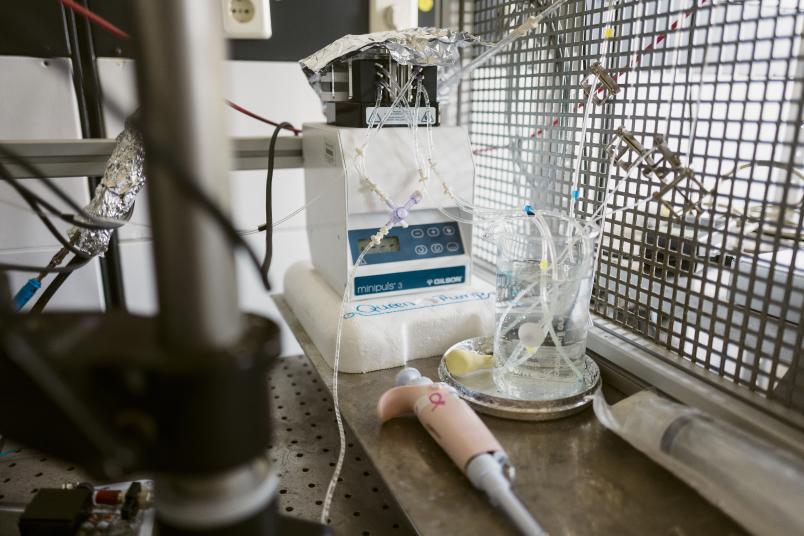Optogenetics Manufacture of light-activated proteins
So far, development has been mainly based on a trial-and-error approach. But a novel method might help save a lot of time.
A new strategy for designing light-sensitive proteins has been developed by researchers at Ruhr-Universität Bochum (RUB). Such proteins, also known as optogenetic tools, can be switched on and off through light impulses, thus triggering specific cellular processes. They can, for example, be used to analyse and control how signals are transmitted by nerve cells. So far, researchers developing optogenetic tools have been pretty much forced to resort to trial-and-error. A combination of computer-aided and experimental methods has now paved the way for a more targeted approach.
In collaboration with a colleague from Münster, the team headed by Professor Stefan Herlitze, Department of General Zoology and Neurobiology at RUB, and Professor Klaus Gerwert, Department of Biophysics at RUB, has published an article on the method in the journal “Chembiochem”, where it was featured as the cover story in the edition from 15 July 2019.
Switching proteins on and off with light in different colours
An example of an optogenetic tool is the protein melanopsin. It can be switched on and off by two light signals in different colours. “Often, more than just one optogenetic tool is required, for example if two different processes have to be controlled in a cell independently of each other,” explains Raziye Karapinar from the Department of General Zoology and Neurobiology. “We must therefore ensure that the colour signals for both tools do not overlap,” adds Dr. Till Rudack, biophysicist from Bochum.
Klaus Gerwert’s and Stefan Herlitze’s research team has developed a hybrid strategy for targeted protein engineering of melanopsin and other optogenetic tools. To this end, the researchers combined computer-aided calculating methods with electrophysiological measurements.
Computer simulation determines the activating light colour
Using quantum chemistry computer simulations, they calculated the specific light colour required to activate a protein. Thus, they determined how individual protein building blocks resp. the exchange of individual protein building blocks affects the light colour. The computer simulation generated a list of protein variants that qualify as potential optogenetic tools. Subsequently, the researchers used electrophysiological measurements to analyse the promising candidates with regard to their optogenetic potential. This includes light sensitivity, i.e. how much light is needed to switch the protein on and off, as well as the speed and selectivity at which mechanisms are implemented or terminated after the activation of the switch. A good optogenetic tool can be switched on and off in quick succession at low light intensity.
Validation with well-researched optogenetic tool
Using the well-researched optogenetic tool Channelrhodopsin-2, the team validated the new hybrid strategy. For this protein, the researchers used computer simulation to verify how an exchange of protein building blocks would affect the activating light colour. The prognoses corresponded with the values measured in experiments. “This match shows how reliable our strategy is, and it also validates its application for proteins about which we don’t know much, such as melanopsin,” says biophysicist Dr. Stefan Tennigkeit.
New melanopsin variants
With their strategy, the group exchanged specific protein building blocks in melanopsin, thus manipulating the light colour for molecule activation, without impairing the protein function. The light colour that activates the usual melanopsin version overlaps with that of many other optogenetic tools – which is why they cannot be used in combination. “I’m convinced that it will be possible to combine this new melanopsin variant with other optogenetic tools in future, in order to control complex cellular processes,” says Stefan Herlitze.
“Unlike traditional protein engineering methods based on trial-and-error, our approach saves a lot of time thanks to automated computer-aided prognoses that can be calculated on several computers at the same time,” concludes Klaus Gerwert.


